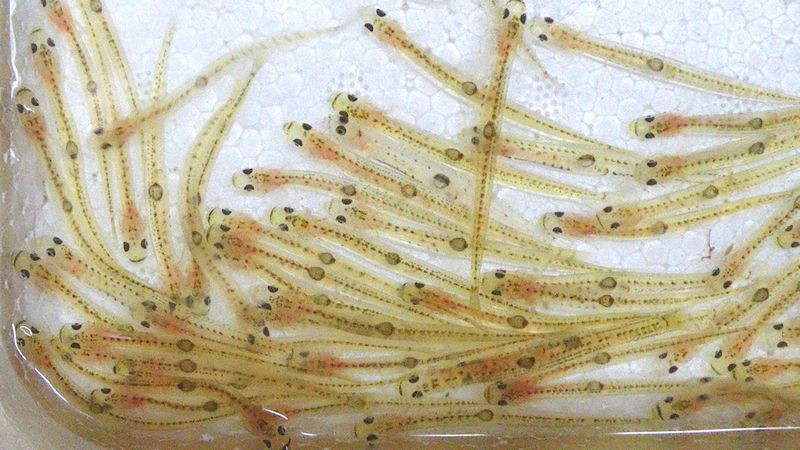Eating is an integral part of human life, which sustains living organisms by providing the nutrition the body needs. However, it is also a social and cultural activity, with practices acceptable in some communities but not others. For example, Japan has an exciting mode of consuming seafood locally known as odorigui.

What is Odorigui?
Odorigui is a traditional Japanese culinary practice that means "dancing eating." This term describes the consumption of live seafood while it is still moving or the consumption of moving animal parts.
Animals consumed in the odorigui style typically include squids, octopuses, and other similar animals. This eating practice does not include the consumption of live seafood that does not have remarkable movements, like sea urchins.
This practice's common dish is the 'shirouo no odorigui, where transparent young fish are eaten raw and often alive. In Japan's Fukuoka prefecture, a type of fish called ice globes is served in shot glasses with nothing but a dash of soy sauce.
The origin of this practice remains a mystery, but some speculate that it began in Fukuoka 300 years ago. Farmers drinking sake beside a river were believed to be grabbing handfuls of fresh fish straight from the water. The minuscule animals are washed with rice wine and consumed without being eaten.
READ ALSO : Reprogrammable Bistable Structure Developed for Soft Robotic Gripper Enhances Human-Machine Interaction
Human-Edible Robot Interaction
Exploring the relationship between people and living creatures related to food can have some challenges. For instance, each country has different moral standards and associated feelings of guilt resulting from the consumption of living creatures.
Because of this, scientific experiments cannot be easily conducted using living creatures to explore the psychological mechanisms behind these practices. While experiments can be carried out using living creatures, controlling their appearance and movements is not easy.
Due to the challenges in studying consumption behaviors using living creatures, a team of researchers from the University of Electro-Communications and Osaka University in Japan introduced the concept of human-edible robot interaction (HERI). The study "Exploring the eating experience of a pneumatically-driven edible robot: Perception, taste, and texture" is the first to explore the experience of consuming a moving edible robot.
The little robot used in this research is made of gelatin, sugar, and apple juice. These are mixed, poured into a mold, and placed in the refrigerator for 12 hours. The product, which resembles a chewy gummy candy, fuses animate movement with an edible substance.
The process includes putting a person's mouth around the robot and letting it move around for 10 seconds. Afterward, the 'food' can be bitten, chewed, and swallowed.
Two experiments are involved in this study. In the first experiment, the participants' impressions are assessed based on observing the robot's movements without being eaten. This stage offers valuable insights on how the observed animateness of the robot affects hypothetical eating experience.
In the second experiment, each participant experienced eating the robot while it was moving and when it was stationary. This comparison revealed that perception was more intense when the robot was in motion.
The researchers believe that the result of their study opens possibilities in intersecting culinary arts and robotics. This can have innovative applications in gastronomy and medical fields. Moreover, it can help broaden our understanding of the complex relationship between food ethics, technology, and human values.
RELATED ARTICLE : Smart Soft Sensor Enhances Human-Machine Interactions, Revolutionizes Robotics and Prosthetics
Check out more news and information on Human-Machine Interaction in Science Times.
© 2026 ScienceTimes.com All rights reserved. Do not reproduce without permission. The window to the world of Science Times.











